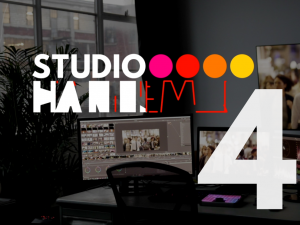How Can We Help?
Subtitle Fonts
In considering the right font for your subtitles, you should prioritize:
Legibility
The font will be display small. Only choose a sans-serif font (no little lines on the ends of characters).
Computer compatibility
When considering operating system & editing system compatibility, choose a font that is compatible across with both Windows and Mac operating systems and can be read properly by your editing software. One of my favorite fonts for subtitling was Open Sans, but I had to stop using it because the italics style did not appear in the font menu of DaVinci Resolve or Final Cut Pro X. There are many other fonts that have weird compatibility issues. Test your font before committing to it.
Language compatibility
If the fonts don’t have foreign accents or characters in their glyph library, they will not be useful for foreign language translation.
Style
A clean, simple generic style that doesn’t call too much attention to itself is always nice in a subtitle font. You may also want to give your film or show a unique visual identity, and that can include the choice of subtitle font. Go crazy! But not too crazy… at least keep it sans-serif.
Italics (a font that has an italics-style version)
The use of italics is common in subtitling. Since italicised characters are more difficult to read than standard text, use them sparingly. Italics are usually reserved for the following situations:
- Titles of books, newspapers, albums, songs, films, pieces of art
- Music Lyrics
- Telephone voices
- Isolated words in a foreign language that are not translated
- Emphasis, if necessary
- Voice-overs / commentary as appropriate (to distinguish from main dialogue)
_____________________________________________________________________________________
Best subtitle fonts: short-list
Arial
System font developed to be a perfect printable replacement for Helvetica (to avoid license fees). Bundled with Windows starting version 3.1 and Mac starting OSX 10.0
– High level of language and system compatibly, included in both Mac and Windows OS installations.
– Unassuming, looks generic, sometimes too generic
PT Sans
Much like Open Sans but with the added benefit of having the font styles accessible in editing software like Final Cut and Resolve. Originally developed by ParaType as a full Cyrillic (Russian), it provides important language compatibility and can be freely distributer.
– System and language compatibility
– Libre license, free use
– Clean modern design, easy to read on screen
Tiresias ScreenFont / Infofont
Preferred subtitle font of the BBC, it was developed by the Royal National Institute for Blind People for best legibility. The font family includes 6 styles, of which Screenfont is designed specifically for subtitles. Unfortunately, it is the only font in the family that is not freely distributable. Tiserias Infofont is a free, very close alternative that can be used as a replacement. Two major differences between Screenfont and Infofont is that Screenfont comes programmed with larger spaces and long dashes. The spaces do make reading easier, but the long dashes look a bit off.
– Designed specifically for legibility
– Clean and pleasant form
Verdana
System font developed by Windows for legibility on small low resolution screen, release in 1996 and bundled with Mac OSX starting 10.4
– High level of language and system compatibly
– Slightly rounded, it offers a nice alternative to Arial/Helvetica
Subtitle fonts for Mac:
If you’re planning to stay in the Mac environment, you might consider these fonts that are included as system fonts:
Avenir
Bundled with Mac OS starting 10.8, this font is a nice alternative to Arial. It is more rounded and has a light weight than Arial but is still easily legible when displayed as small type.
– No official free version for Windows
– Stylish, clean and easy to read
Helvetica
Bundled with Mac OS, Helvetica is the classic modern generic font.

